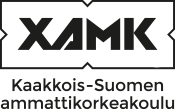Business and Finnish as a second language 1 (B1) (5 cr)
Code: VA00DM67-3001
General information
Enrollment
05.04.2019
Timing
01.05.2019 - 31.05.2019
Number of ECTS credits allocated
5 op
Virtual portion
5 op
Mode of delivery
Distance learning
Unit
Yhteisten opintojen koulutusyksikkö
Campus
Ecampus
Teaching languages
- Finnish
Seats
0 - 20
Degree programmes
- Higher education preparatory program for immigrants
Teachers
- Miia Karttunen
Teacher in charge
Miia Karttunen
Groups
-
VALME19
-
VV2018-2019
Objective
The students understand the basics of doing business in Finland, and they recognize and know how to use key business concepts. The students learn to search for information from Finnish language sources and share their learning outcomes with other students. Finnish language proficiency level: B1.1 (CEFR).
Content
The course introduces key concepts and information sources used in business. The course gives students basic information about companies and organizations and about the role authorities have in the Finnish business life. The course also introduces business-related vocabulary and key grammatical structures in the Finnish language.
Evaluation scale
1-5
Assessment criteria, satisfactory (1)
1-2
Student has achieved the course objectives fairly. Student is able to identify and use the course subject area’s concepts and understands the conditions of knowledge and skills development.
Assessment criteria, good (3)
3-4
Student has achieved the course objectives well, even though the knowledge and skills need improvement on some areas. Student is able to use well the course concepts and to apply his/her knowledge in study and work situations. Student is able to analyze his/her own knowledge and skills.
Assessment criteria, excellent (5)
5
Student has achieved the objectives of the course with excellent marks. Student masters commendably the course subject area’s concepts and is able to make justified and fluent analysis on course subject area. Students is well prepared to apply his/her knowledge and skills in study and work situations. Student is able to analyze the competencies of the study field and the development of his/her own knowledge and skills.
Assessment methods and criteria
Learning is assessed with different methods and criteria. The development-oriented assessment supports learning and does not take place only at the end of the study units or modules.
Learning is assessed from different points of view by the teacher, peers and the students themselves. Assessment is part of student guidance and helps the students recognize and evaluate their own learning and become aware of how they learn.
Assessment criteria, satisfactory (1-2)
1-2
Student has achieved the course objectives fairly. Student is able to identify and use the course subject area’s concepts and understands the conditions of knowledge and skills development.
Assessment criteria, good (3-4)
3-4
Student has achieved the course objectives well, even though the knowledge and skills need improvement on some areas. Student is able to use well the course concepts and to apply his/her knowledge in study and work situations. Student is able to analyze his/her own knowledge and skills.
Assessment criteria, excellent (5)
5
Student has achieved the objectives of the course with excellent marks. Student masters commendably the course subject area’s concepts and is able to make justified and fluent analysis on course subject area. Students is well prepared to apply his/her knowledge and skills in study and work situations. Student is able to analyze the competencies of the study field and the development of his/her own knowledge and skills.
